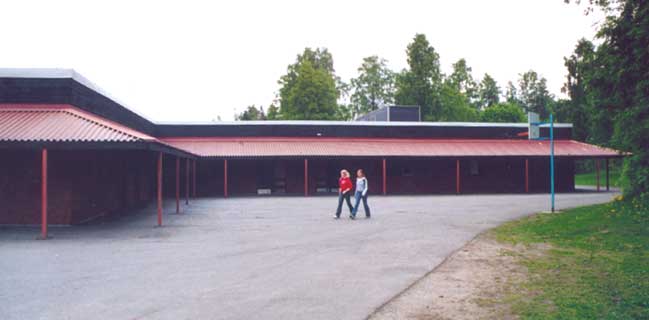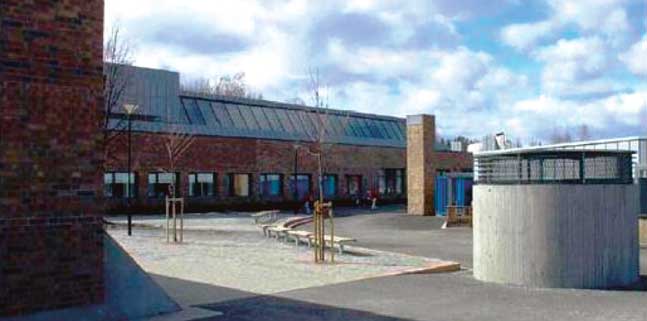- Byggforskserien
- Planlegging
- Andre bygninger
- Undervisningsbygg og barnehager
- 342.207E Elementary school buildings. Examples
Elementary school buildings. Examples
Byggforskserien
Januar 2011
342.207E
Elementary school buildings. Examples
Fig. 121
Daylight openings (skylights) in the roof and the new façade are the most distinctive and eye-catching features of this renovation project. One air-intake tower is shown in the lower picture.
This guide gives design/layout examples of elementary schools. In contrast to former times more-standardised school buildings, these days there is a greater variation in design/layout. The examples have been chosen to illustrate different models of home-base areas. Some of the concepts used in this guide are explained in Building Research Design Guide 342.205.
Januar 2011 ISSN 2387-6328
For å lese mer må du kjøpe tilgang.
For å lese anvisninger fra arkivet må du abonnere på Byggforskserien komplett
Alle abonnement faktureres 12 måneder forskuddsvis.
Se alle priser her
Andre abonnement
Allerede abonnent? Logg inn
- 0 General
- 01 Contents
- 02 Different school models
- 03 References
-
1
Borgen Community Centre in Asker –
office-environmental model for home-base areas - 11 General
- 12 Floor plan
- 13 Energy-economy measures
- 2 Eberg School in Trondheim – home-base areas in small landscapes
- 21 General
- 22 Floor plan
- 3 Røros School – open working area surrounded by group rooms
- 31 General
- 32 Floor plan
- 4 Heinävaaran koulu in Finland – home-base areas open towards common area
- 41 General
- 42 Floor plan
- 5 Hellerup School in Denmark – home-base areas in open landscape
- 51 General
- 52 Floor plan
- 6 Hommelvik School in Sør-Trøndelag – large classrooms surrounding a common area
- 61 General
- 62 Floor plan
- 7 References
- 71 Production
- 72 Bibliography
- Endringshistorikk
- Fagområde

